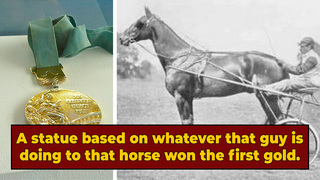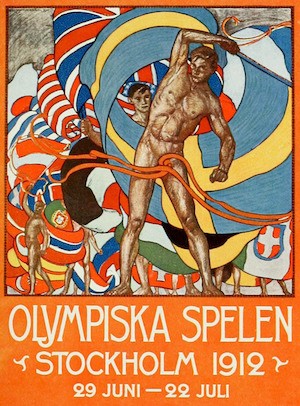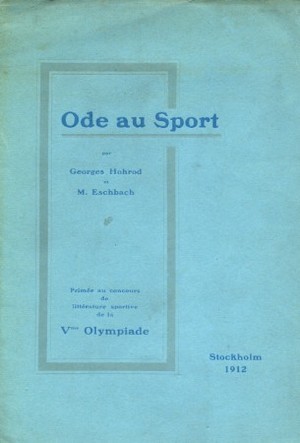Back In The Day, They Had An Olympic Gold Medal For Art

While watching any Olympic Games, especially the women's volleyball, the last thought in your head is probably: "You know what would make this sporting event more legit? Competitive architecture." But once upon a time, Olympic villages weren't just chock full of washboard abs-ed meatheads going to town on each other. It was supposed to be a place for true Olympians, athletes/artists who could both throw a javelin through a judge at a hundred paces but then also write an epic poem about the glorious evisceration.

Baron Pierre de Coubertin, founder of the modern Olympics and a certified fancy man, never wanted the Olympics to just reward feats of the perfectly toned body, but also the perfectly toned mind. Classically trained himself, the baron pushed hard to include the arts into the Olympics. His wish was granted in 1912 when an enthralled Stockholm Olympic Committee approved the addition of the very athletic categories of painting, sculpture, architecture, literature, and music. And the results were … less than Olympian, as demonstrated by the first gold medal sculpture: An American Trotter, a bronze statuette based on a riding-style that appears to be a jockey giving his horse a prostate exam:

See, there was an artistic catch: Olympians were only allowed to submit sports-related art. That scared off established artists even more, and these geeks had plenty of experience being wary of when the jocks invite them into their locker room. During the first arts Olympics, there were only 32 contenders spread over the five artistic disciplines -- meaning it was statistically easier to go home with an Olympic medal than not. Worse, one of them, the winner of the gold medal in literature, was none other than Baron de Coubertin himself, writing the quintessential Olympic piece of literature Ode to Sport.

Sadly, the artsy-fartsy Olympic Games never took off. Some years, the competition was so poor that judges refused to award a gold medal or even any medals at all. Besides, by 1948, new Olympic president Avery Brundage (a former contender in the 500 meters literature) insisted that competitors had to maintain their amateur status. And since, unlike shot putters, most great artists manage to make a living out of their talents, this would've left only the kind of artist who had only ever bored a bunch of coffee drinkers at a local open mic.
In the end, only 151 arts medalists reigned supreme over nine Olympic Games, a paltry performance if you take into account that 971 medals were handed out at the 2016 Rio Olympics alone. Or, to be correct, there used to be 151 arts medallists. After 1948, all these medals were officially stricken from the record -- something to do with not liking the fact that a flabby 73-year-old fart had once won a gold Olympic medal. In competitive Painting and Engraving.
For more Olympic-level writing (i.e. amateurish), do follow Cedric on Twitter.
Top Image: Scorpions and Centaurs/Flickr